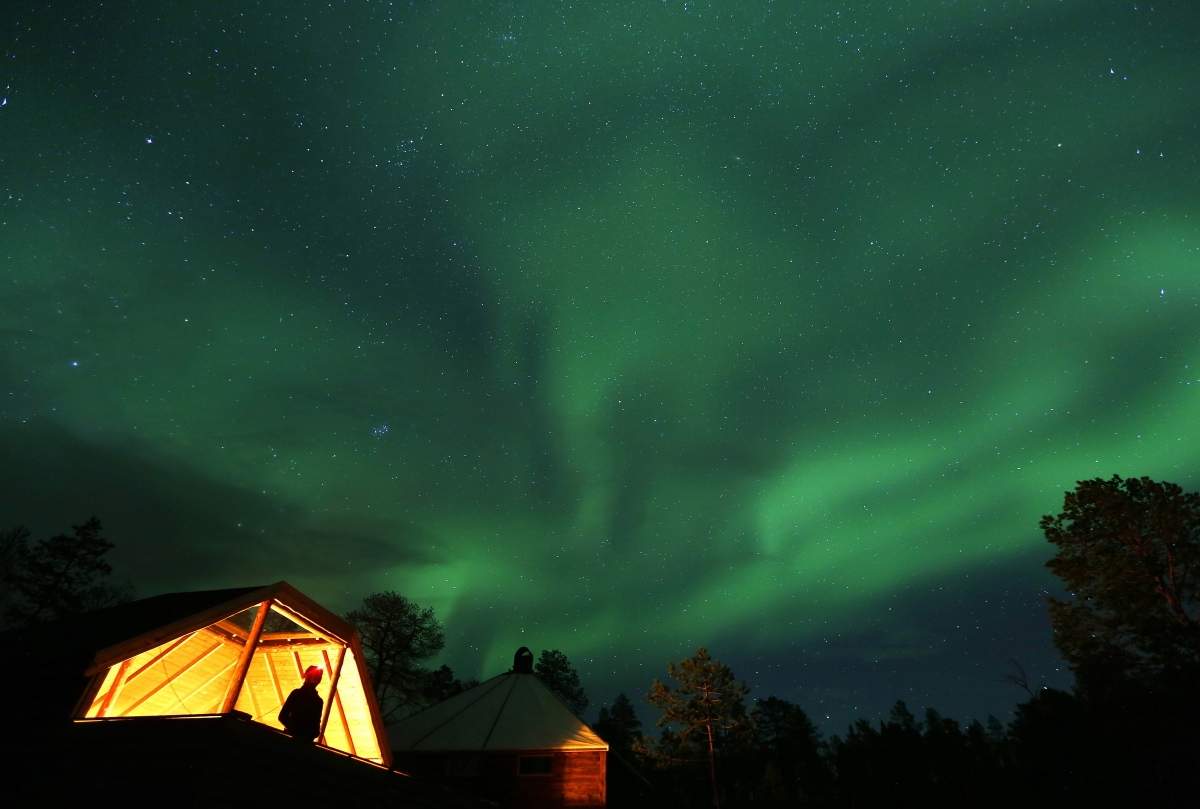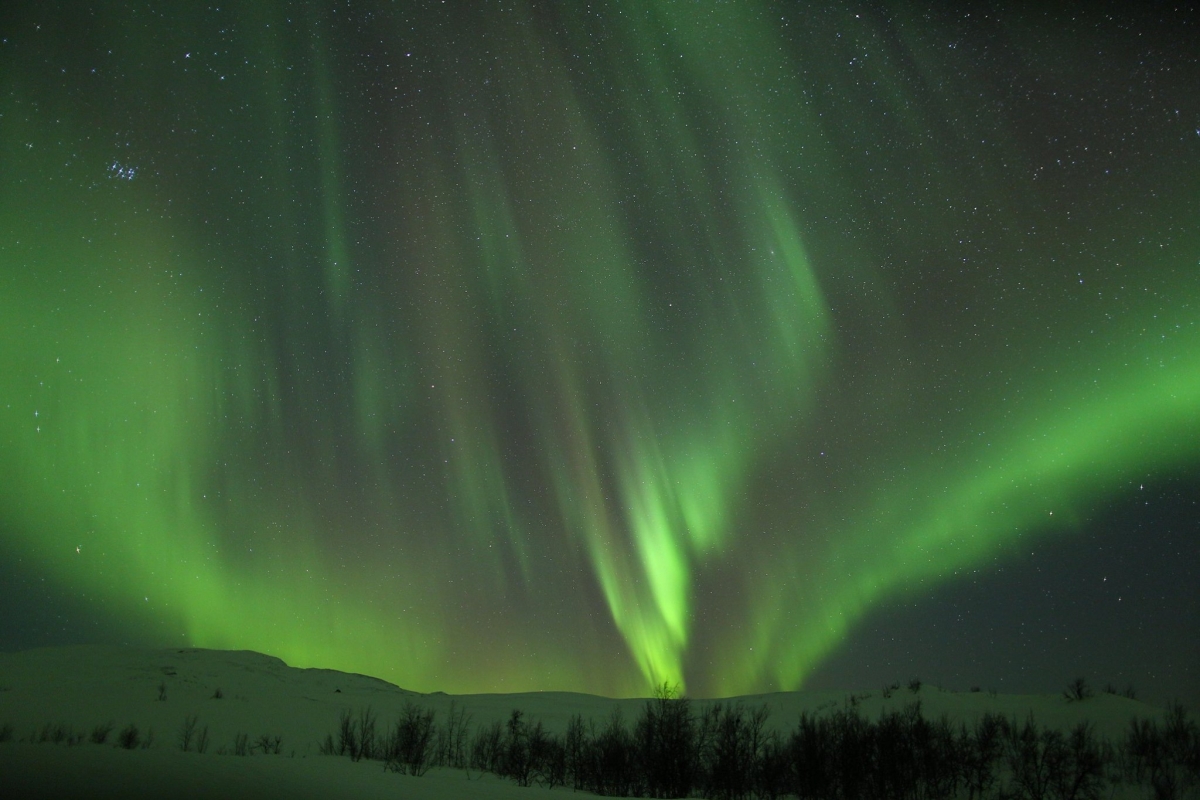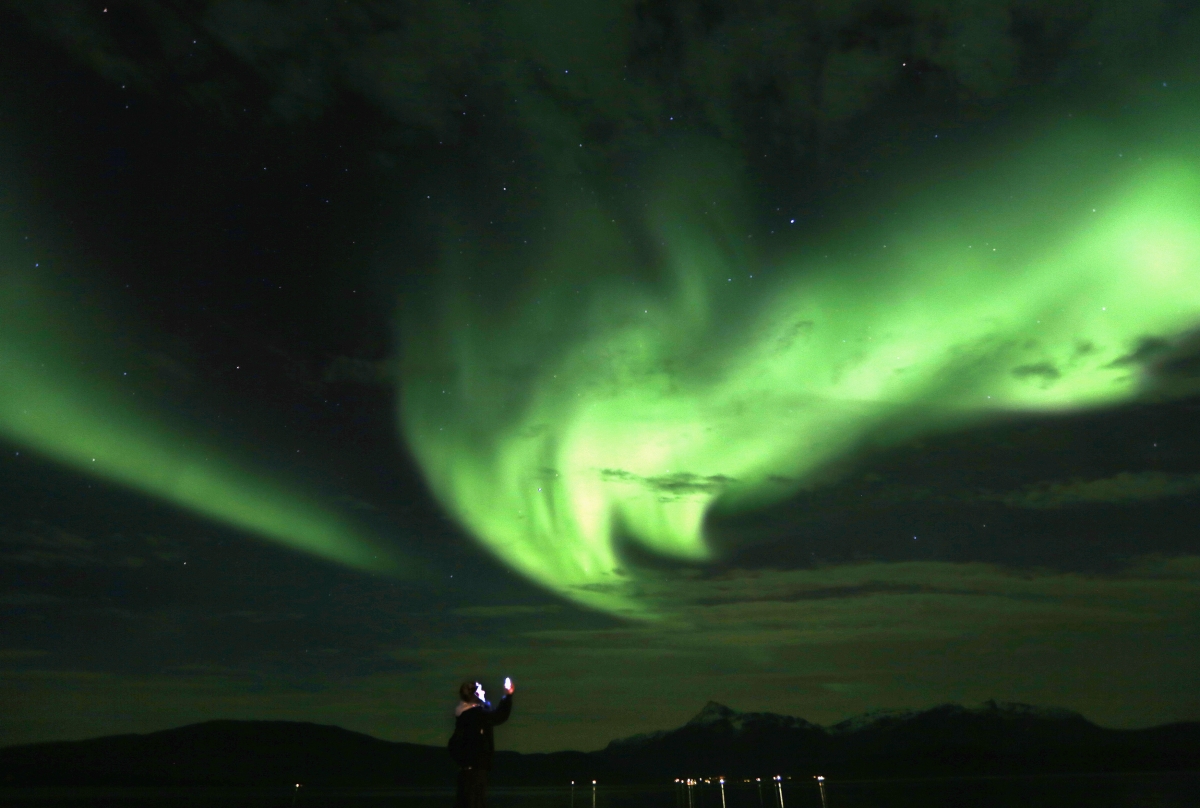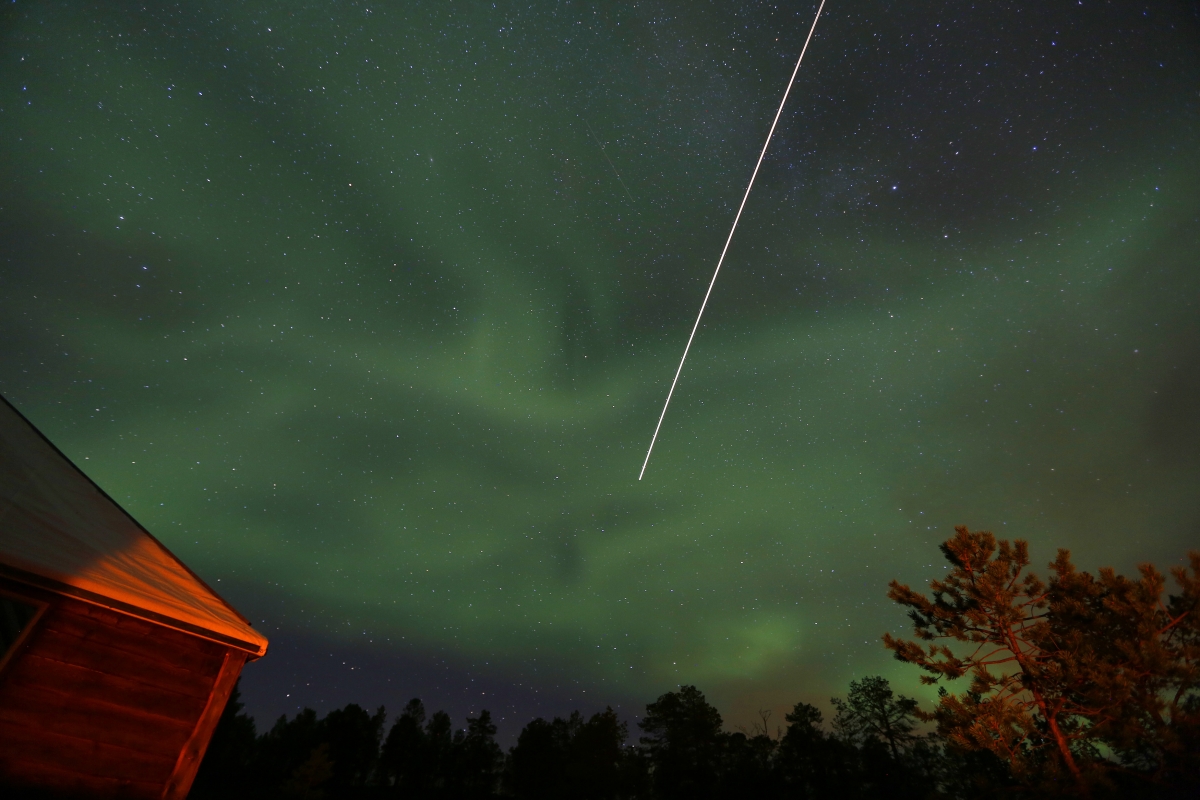Aurora Borealis, which is named after the Roman goddess of dawn, Aurora, is the brilliant display of colour that appear in many forms. These include patches or scattered clouds of light in the form of streamers, arcs, rippling curtains or shooting rays that light up cold skies with an eerie glow.
Generally, konown as the Northern Lights, this natural phenomenon is actually the result of collisions between gaseous particles in the atmosphere with charged particles released from the Sun, according to the Northern Lights Centre.
According to the UK travel company Off the Map Travel, which conducts exclusive Northern Lights holidays, the Auroral Oval, is a special ring-like area seen around the magnetic North Pole at 65 -72 degrees latitude, wherein countries such as Iceland, Norway, Sweden and Finland are positioned. Hence these are the best locations for watching Aurora Borealis.
The Northern lights can be seen any time between September and March and are visible during the dark hours, with the best time to view being between 9pm and midnight.
On 2 October, a rare collision of erupting lava from Iceland's Bárðarbunga volcano and the Aurora Borealis has created one of the most breathtaking light shows on Earth, Fox News reported.
The Bárðarbunga eruption, which began in August, continues to spew molten lava, but October's clear, dark skies make for some of the best viewing of the two natural phenomena. When the geo-magnetic storms that cause the Northern Lights mix with the emerging lava from the Bárðarbunga volcano, a brilliant display of colour is generated.
"This is great news for anyone who has dreamed of experiencing the Northern Lights," said Jonny Cooper, Northern Lights expert and founder of Off the Map Travel.
Its southern counterpart, Aurora Australis (or the Southern Lights), has features that are almost identical to the Aurora Borealis and changes simultaneously with changes in the northern auroral zone. It is visible from high southern latitudes in Antarctica, South America, Australia and Oceania.
In this video posted on the Off the Map Travel YouTube channel, a brilliant display of Northern Lights, captured over Kilpisjarvi in Finland can be seen.














